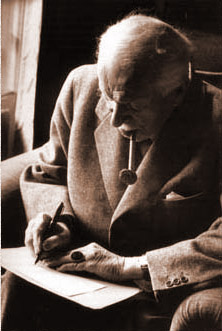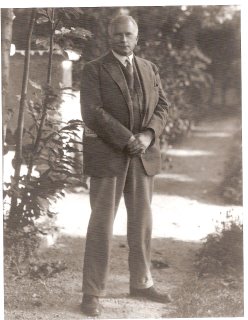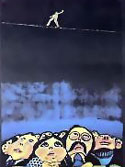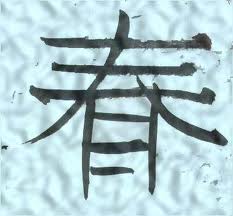
Carl Jung Concepts for Psychonauts :
Please note: this summary has been taken from the book “A Primer In Jungian Psychology” by Calvin S. Hall & Vernon J. Nordby (Published by Mentor, an imprint of Dutton Signet, a division of Penguin Books USA Inc.)
Since the main themes inspiring Psychonauts fall mostly under the Structural aspects of Carl Jung’s theory of personality, we’ve listed below for your convenience, a concise overview of these topics.
Summary
The structure of Personality:
Comprehensive theory of Personality
A complete conception of human personality attempts to give answers to three sets of questions: structural, dynamic, and developmental. · A concept is a name or tag for a group of observed facts about some natural phenomenon together with the ideas, inferences or hypotheses that attempt to account for the observed facts.- In discussing a concept one must go from the general to the particulars.
- The most useful concepts are those that can be applied widely.
- Jungian concepts posses this feature, they are very broad in their scope.
- Concepts have their dangers too. A concept may bias or limit our observations so that we see things that do not exist or we do not see things that do exist.
- Jung insisted upon the priority of observable facts over theories.
The Psyche
The personality as a whole is called the psyche.
This Latin word originally meant “spirit” or “soul”, but in modern times it has come to mean “mind”, as in psychology the science of mind.
The concept of the psyche affirms Jung’s primary idea that a person is a whole to begin with.
Man does not strive for wholeness, he already has it, and he is born with it. What he must do throughout his life is to develop this “inherent wholeness” to the greatest degree of differentiation, coherence and harmony possible and to guard against it breaking up into separate, autonomous and conflicting systems.
A dissociated personality is a deformed personality.
Jung’s work as a psychoanalyst was to help patients “recover” their lost wholeness and to strengthen the psyche so it could resist future dismemberments.
The ultimate goal of psychoanalysis is psycho-synthesis.
Levels in the Psyche
- Consciousness
- Personal unconscious
- Collective unconscious
Consciousness
It’s the only part of the mind that is known directly by the individual. It appears early in life, probably prior to birth.
The conscious awareness of a child grows daily through the application of the four mental functions:
Thinking, feeling, sensing and intuiting.
The predominant use of one of these functions is what differentiates one child’s basic character from that of another child.
In addition to the four mental functions, there are two attitudes that determine the orientation of the conscious mind:
Extraversion (toward the external objective world)
Introversion (toward the internal subjective world)
Individuation
It’s the process by which the consciousness of a person becomes individualized or differentiated from other people.
Individuation plays a mayor role in psychological development. Jung uses it to denote the process by which a person becomes a psychological “in-dividual” that is a separate, indivisible unity or whole.
The goal of individuation is self-consciousness or knowing one self as completely as possible.
From the process of individuation of consciousness a new element is produced: the ego.
The Ego
According to Jung the Ego is the organization of the conscious mind.
It’s composed of conscious perceptions, memories, thoughts and feelings.
Although the ego occupies a small portion of the total psyche, it plays the vital function of gatekeeper to consciousness.
Unless the ego acknowledges the presence of an idea, a feeling, a memory or a perception, it cannot be brought into awareness; otherwise we would be overwhelmed by the mass of material that would crowd into consciousness.
The ego provides identity and continuity for a personality.
Individuation and the ego work in close relationship to each other in developing a distinctive and ongoing personality.
The person can become individuated only to the extent that the ego permits incoming experiences to become conscious.
What determines what the ego will allow to become conscious and what it will reject?
Partly the dominant function: feeling type, thinking type, intuitive type, and sense type.
Partly it’s due to the amount of anxiety that the experience arouses in the ego.
Partly it’s due to the level of individuation reached (knowing oneself as completely as possible).
Ideas and memories that evoke anxiety are apt to be refused admittance to awareness (consciousness).
It’s also due to the intensity of the experience (very strong experiences can batter their way through the gates of the ego.)
A highly individuated person will allow more things to become conscious.
Personal unconscious
It is the receptacle that contains all those psychic activities and contents, which are incongruous with the conscious individuation or function. Or, they were once conscious experiences which have been repressed or disregarded for various reasons, such as:
A distressing thought.
An unsolved problem.
A personal conflict.
A moral issue.
The personal unconscious is like an elaborate filing system or memory bank. Something that has little or no interest to us at the time, years later may become highly relevant and then is summoned forth from the personal unconscious.
Experiences that have passed unnoticed during the day may appear in a dream that night. As a matter of fact, the personal unconscious plays an important part in the production of dreams.
The complexes
One interesting and important feature of the personal unconscious is that groups of content may clump together to form a cluster or a constellation. Jung call them complexes. Complexes are autonomous, they posses their own driving force and can be very powerful in controlling our thoughts or behaviors.
A strong complex (a hang-up) is easily noticed by others, although the person himself may not be aware of it.
Complexes are deeply implicated in a patient’s neurotic condition. A person does not have a complex, “the complex has him”.
An aim of analytical therapy is to dissolve complexes and to free the person from their tyranny over his life.
A complex doesn’t need to be a hindrance to a person’s adjustment. In fact, quite the contrary, they can be and often are sources of inspiration and drive which are essential for outstanding achievement.
According with Freud complexes have their origin in traumatic experiences in early childhood but Jung came to the realization that complexes must originate out of something deeper in human nature than early childhood experiences, the collective unconscious.
The collective unconscious
The mind of man is prefigured by evolution.
The individual is linked with his past, not only with the past of his infancy but also more importantly with the past of the species and before that with the long stretch of organic evolution.
The personal unconscious is composed of contents that were once conscious, but the contents of the collective unconscious have never been conscious within the lifetime of the individual.
The collective unconscious is a reservoir of latent images, called “Primordial images” (It refers to the earliest development of the psyche).
Man inherits these images ————————————- Human ancestors
from Primordial Images ————————————- Pre human and animal
(His ancestral past) ancestors
These racial images are predispositions or potentialities for experiencing and responding to the world in the same way that his ancestors did.
This is a place to discuss a criticism that has often been made to Jung’s explanation of the origin of the collective unconscious .
Two views of the mechanism of evolution put forward by biologists.
- What is learned through experience by previous generations can be inherited by future generations and does not need to be learned by them anew. Habits become instincts. This is called “the doctrine of acquired character” or Lamarckism. (After its founder)
- Evolution proceeds by changes in the germ plasma. (Called mutations). Mutation which favor the adaptation of the individual to his environment and which increase his chances of survival and of reproduction tend to be passed along from generation to generation. Mutations that disfavor adaptation, survival and reproduction, are eliminated.
Jung realized that the evolution of the collective unconscious could be accounted for in the same way that the evolution of the body is explained. Because the brain is the principal organ of the mind, the collective unconscious depends directly upon the evolution of the brain.
Man is born with many predispositions for thinking, feeling, perceiving, and acting in specific ways. The development and expression of these predispositions or latent images depend entirely upon the individual’s experiences. That is why a rich environment and opportunities for education and learning are necessary for individuating (making conscious) all aspects of the collective unconscious.

Archetypes
They are the contents of the Collective Unconscious.
The word Archetype means an original model after which other similar things are patterned. There are as many archetypes as there are typical situations in life.
Examples: birth, rebirth, death, power, magic, the hero, the trickster, god, the demon, the wise old man, the earth mother, the giant, many natural objects like trees, the sun, the moon, wind, rivers, fire, animals and many man-made objects such as rings and weapons.
Archetypes are not developed pictures in the mind like memory images of past experiences in one’s life. It’s more a negative that has to be developed by experience.
A primordial image is determined as to its content only when it becomes conscious and is therefore filled out with the material of conscious experience.
Although archetypes are separate structures in the Collective Unconscious they can form combinations.
Some archetypes have great importance in shaping our personality and behavior.
- The persona
- The anima/animus
- The shadow
- The self
The archetype is the nucleus of a Complex (they are separated little personalities within the total personality, feature of the personal unconscious)
The archetype functions as a magnet, attracting relevant experiences to it to form a Complex. After gaining sufficient strength from the addition on of experiences, the complex penetrates into consciousness. It is only by being the center of a well-developed Complex that the archetype can find expression in consciousness and behavior.
The Persona:
This archetype is the mask or façade one exhibits publicly, with the intention of presenting a favorable impression so that society will accept him. It might also be called the conformity archetype.
All archetypes must be advantageous to the individual and to the race; otherwise they would not have become a part of man’s inherent nature. The persona is necessary for survival. It enables us to get along with people, even those we dislike, in an amicable manner. It can lead to personal gain and achievement. It is the basis for social and community life.A person may have more that one mask. One mask at home, another one at work and a different one when he goes to do yoga or to play golf. All of his masks constitute his persona. If the person becomes too preoccupied and too involved with the role he’s playing and his ego begins to identify solely with this role, the other side of his personality will be shoved aside. The ego’s identification with the persona is called inflation.
On the one hand, the person has an exaggerated sense of self-importance which derives from playing the role so successfully. On the other hand, the victim of inflation can also suffer feelings of inferiority and self reproach when he is incapable of living up to the standards expected of him. The persona needs to be deflated in order to get the others sides of one‘s nature to assert themselves. This is a difficult undertaking for a person that has been identifying with his persona for many years. For better or worse, however, the persona is a fact of human existence and must find expression, preferably in a modest form.
The Anima and the Animus
Jung called the Persona, the ‘outward face of the psyche’ because it is that face which the world sees. The ‘inward face’ he called the Anima in males and the Animus in females.
The Anima archetype is the feminine side of the male psyche; the Animus archetype is the masculine side of the female psyche. Every person has qualities of the opposite sex, both biological and psychological (including attitudes and feelings).
We develop this archetype over many generations by our exposure to the opposite sex, which facilitates our response to and understanding of the opposite sex. Thus this archetype, like that of the Persona has strong survival value.
These archetypes are often deflated or underdeveloped. One reason for these differences is that Western civilization seems to place a high value on conformity and to disparage femininity in man and masculinity in women. The disparagement begins in childhood when Sissies and Tomboys are ridiculed. Boys are expected to conform to a culturally specified masculine role and girls to a feminine role. Thus, the persona takes precedence over and stifles the anima or animus.
One consequence of this imbalance between the persona and the anima or animus is that may trigger a rebellion of the anima or animus, in which case the person over reacts.
A young man may accentuate his anima to the extent that he’s more feminine than masculine. Some male transvestites and some effeminate homosexuals fall into this category. A man’s identification with his anima may be so complete that he will undergo hormonal treatment and genital surgery to turn him into a physically appearing woman. Or a young woman may identify so completely with her animus that she has her feminine features changed in order to appear more masculine.
The shadow
The anima or animus is projected on the opposite sex and it’s responsible for the quality of the relationships between opposite sexes. The shadow is the archetype that represents one’s own gender and that influences a person’s relationships with his own sex.
The shadow contains more of man’s basic animal nature than any other archetype does. It’s probably the most powerful and potentially the most dangerous of all of the archetypes. It’s the source of all that is best and worst in man, especially in his relationship with others of the same sex.
In order for a person to become an integral member of the community, it’s necessary to tame his animal spirits contained in the shadow. This taming is accomplished by suppressing manifestations of the shadow and by developing a strong persona which counteracts the power of the shadow. The person who suppresses the animal side of his nature may become civilized, but he does so at the expense of decreasing the motive power of spontaneity, creativity, strong emotions, and deep insights. He cuts himself off from the wisdom of his instinctual nature, a wisdom that may be more profound that any learning or culture provide.
When the ego and the shadow work in close harmony, the person feels full of life and vigor. The ego channels instead of obstructing the forces emanating from the instincts.
The shadow is responsible for one’s relationship with people of the same sex. The relationships can be either friendly or hostile depending upon whether the shadow is accepted by the ego and becomes incorporated harmoniously into the psyche, or whether it’s rejected by the ego and banished to the unconscious. Men tend to project their rejected shadow impulses on other men so that bad feelings often arises between males. The same is true for women.
Rejection of the shadow flattens the personality.
The Self
The self is the central archetype in the collective unconscious, much as the sun is the center of the solar system. The self is the archetype of order, organization and unification; it draws to itself and harmonizes all the archetypes and their manifestations in complexes and consciousness. It unites the personality, giving it a sense of “oneness” and firmness.
The ultimate goal of every person is to achieve a state of selfhood and self-realization; this is not a simple undertaking, but a very lengthy, difficult, and complicated task which is rarely, if ever, completely achieved by anyone. Great religious leaders like Jesus and Buda come closest to have achieved it.
The self archetype does not even become evident until about middle age, since the personality must become fully developed through individuation before the self can become manifest with any degree of completeness. Achieving a state of Self Realization depends largely upon the cooperation from the ego; for if the ego ignores messages from the self archetype, an appreciation and understanding of the self would be impossible. Everything must become conscious in order to have the effect of individuating the personality.
Knowledge of the self is accessible through the study of one’s dreams among others.
Jung counsels that less emphasis should be placed on obtaining Self- realization, and more emphasis should be place on knowledge of one’s self. Self- knowledge is the path of self- realization. This is an important distinction, because many people want to fulfill themselves, without having the slightest knowledge of themselves. They want instant perfection, a miracle that will transform them into a fully realized person. Actually, the task is the most arduous a man faces in his life, requiring constant discipline, persistent efforts, and the highest responsibility and wisdom.
By making conscious that which is unconscious, man can live in greater harmony with his own nature. He will experience fewer irritations and frustrations because he recognizes their origins in his own unconscious. A person who does not know his unconscious self projects the repressed elements of his unconscious on others. He accuses them of his own unrecognized faults, thus criticizing and condemning them, while all the time he is really projecting an unconscious part of him.
Self –awareness exposes these projections and one is no longer compelled to seek victims, to criticize and scorn. One’s relationship with people improve and one feels more in harmony with the world and ourselves.
The self has the capacity to regulate or govern, and influence the personality, enabling it to mature and increase its perceptiveness. Through development of the self man becomes motivated to increase his awareness, perceptions, understanding, and the direction of his life.
The concept of the self archetype is the most important result of Jung’s investigations of the collective unconscious. He discovered the self archetype after all his intensive studies and writing on the other archetypes were completed. He concluded that “… The self is our life’s goal; for it’s the most complete expression of that fateful combination we call individuality…”
Interaction among the structures of personality
Jung discusses three kinds of interaction. One structure may compensate for the weakness of another structure, one component may oppose another component, and two or more structures may unite to for a synthesis.
Compensation may be illustrated by the contrasting attitudes of extraversion and introversion. That is why a period of extroverted behavior is followed by a period of introverted behavior.
Compensation also occurs between functions, a person who stresses thinking or feeling in his conscious mind will be an intuitive, sensation type unconsciously.
The normal male ego is masculine while the anima is feminine and the normal female ego is feminine while the animus is masculine.
Opposition exists everywhere in the personality, between the persona and the shadow, between the persona and the anima and between the shadow and the anima.
Introversion opposes extroversion, thinking opposes feeling, and sensation opposes intuition. The ego is like a shuttlecock that is batted back and forth between the outer demands of society and the inner demands of the collective unconscious.
Jung believes that a psychological Theory of Personality must be founded on the principle of opposition or conflict because the tensions created by conflicting elements are the very essence of life itself. Without tension it there would be no energy and consequently no personality.
Jung thought that there can always be a union of opposites; he offers evidence of the various ways in which opposites can be synthesized. The union of opposites is accomplished by what Jung called “the transcendent function”. It‘s this inborn function that leads to the formation of a balanced, integrated personality.


